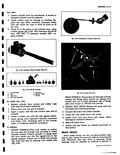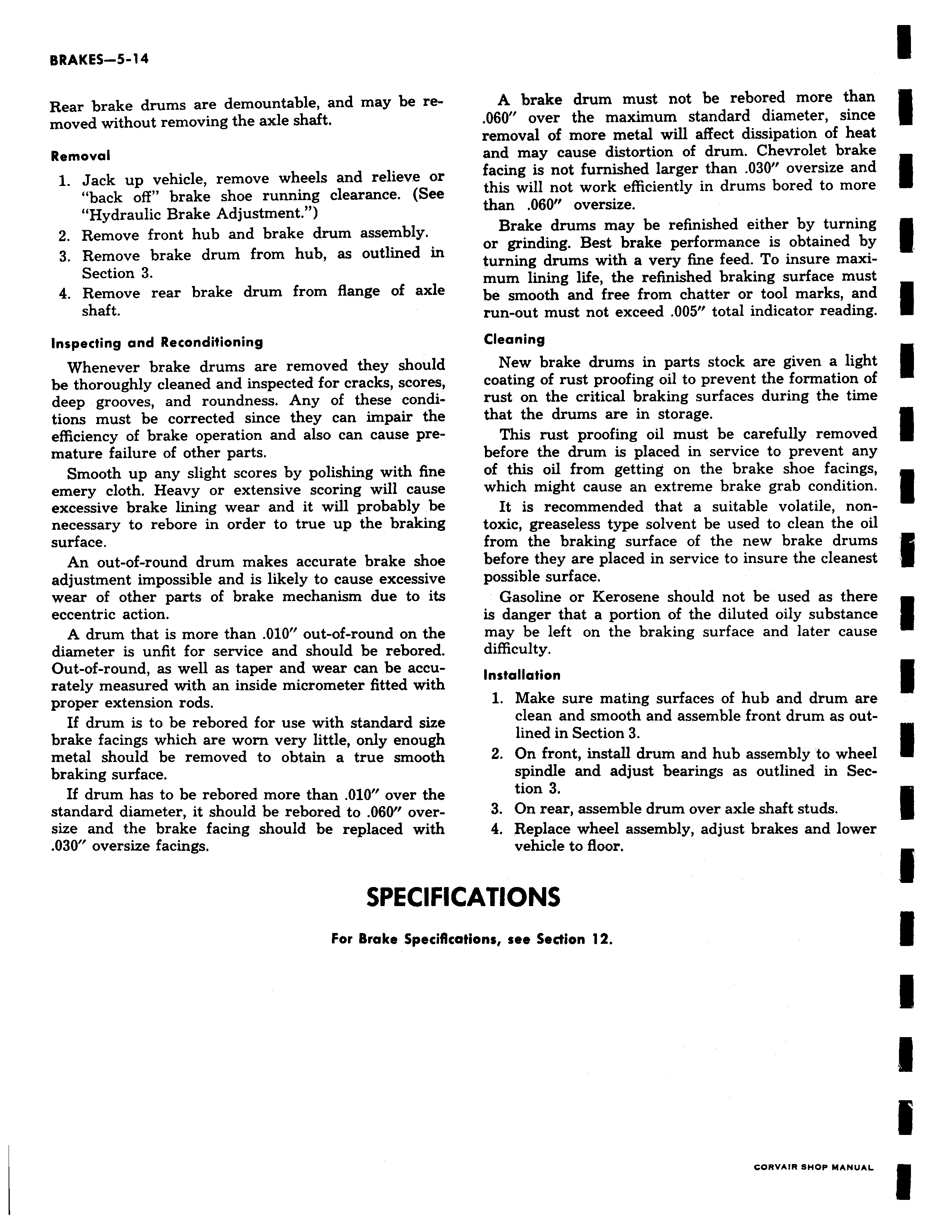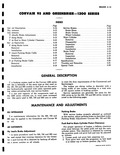Jeep Parts Wiki | Ford Parts Wiki
Home | Search | Browse
Prev

 Next
Next
Rear brake drums are demountable and may be removed without removing the axle shaft Removal 1 Jack up vehicle remove wheels and relieve or back off brake shoe running clearance See Hydraulic Brake Adjustment 2 Remove front hub and brake drum assembly 3 Remove brake drum from hub as outlined in Section 3 4 Remove rear brake drum from flange of axle shaft Inspecting and Reconditioning Whenever brake drums are removed they should be thoroughly cleaned and inspected for cracks scores deep grooves and roundness Any of these conditions must be corrected since they can impair the efficiency of brake operation and also can cause premature failure of other parts Smooth up any slight scores by polishing with fine emery cloth Heavy or extensive scoring will cause excessive brake lining wear and it will probably be necessary to rebore in order to true up the braking surface An out of round drum makes accurate brake shoe adjustment impossible and is likely to cause excessive wear of other parts of brake mechanism due to its eccentric action A drum that is more than 010 out of round on the diameter is unfit for service and should be rebored Out of round as well as taper and wear can be accurately measured with an inside micrometer fitted with proper extension rods If drum is to be rebored for use with standard size brake facings which are worn very little only enough metal should be removed to obtain a true smooth braking surface If drum has to be rebored more than 010 over the standard diameter it should be rebored to 060 oversize and the brake facing should be replaced with 030 oversize facings SPECIFIi For Brake Specific A brake drum must not be rebored more than 060 over the maximum standard diameter since removal of more metal will affect dissipation of heat and may cause distortion of drum Chevrolet brake facing is not furnished larger than 030 oversize and this will not work efficiently in drums bored to more than 060 oversize Brake drums may be refinished either by turning or grinding Best brake performance is obtained by turning drums with a very fine feed To insure maximum lining life the refinished braking surface must be smooth and free from chatter or tool marks and run out must not exceed 005 total indicator reading Cleaning New brake drums in parts stock are given a light coating of rust proofing oil to prevent the formation of rust on the critical braking surfaces during the time that the drums are in storage This rust proofing oil must be carefully removed before the drum is placed in service to prevent any of this oil from getting on the brake shoe facings which might cause an extreme brake grab condition It is recommended that a suitable volatile nontoxic greaseless type solvent be used to clean the oil from the braking surface of the new brake drums before they are placed in service to insure the cleanest possible surface Gasoline or Kerosene should not be used as there is danger that a portion of the diluted oily substance may be left on the braking surface and later cause difficulty Installation 1 Make sure mating surfaces of hub and drum are clean and smooth and assemble front drum as outlined in Section 3 2 On front install drum and hub assembly to wheel spindle and adjust bearings as outlined in Section 3 3 On rear assemble drum over axle shaft studs 4 Replace wheel assembly adjust brakes and lower vehicle to floor CATIONS ations see Section 12

 Next
Next